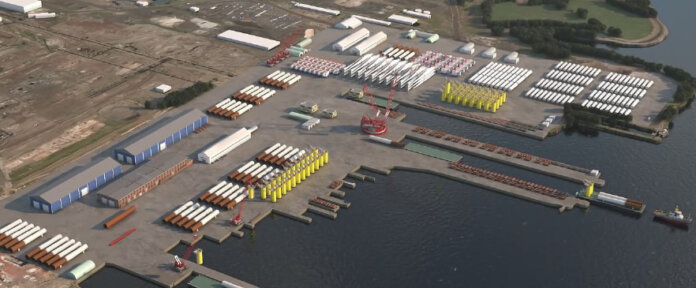Maryland’s offshore wind portfolio is poised to grow substantially with a decision by the Maryland Public Service Commission to award offshore wind renewable energy credits (ORECs) to two developers that have proposed more than 1,600 MW of energy to be built off the coast of Maryland. The decision in the state’s second round of offshore wind solicitations will support US Wind Inc. and Skipjack Offshore Energy LLC in their plans to build separate projects, together yielding nearly $1 billion in additional in-state spending and spurring the creation of more than 10,000 new direct jobs in Maryland.
The new proposed projects are in addition to the 368 MW of offshore wind already being developed by both companies off Maryland’s shore and whose ORECs were approved by the commission in 2017.
“The effects of climate change are real, and with its more than 3,000 miles of tidal shoreline, Marylanders are especially vulnerable,” says Jason M. Stanek, the commission chairman. “That’s why it is important for the commission to take this action that will put our state on a path of deeper decarbonization and help Maryland achieve its aggressive clean energy goals; the residents of our state and region deserve no less.”
In the Round 2 application period that closed in June of this year, US Wind submitted three bids, and Skipjack submitted two bids. The proposals were evaluated on a number of criteria, including impacts to customer electric bills, Maryland’s health, environmental and climate interests – including progress towards lowering the state’s greenhouse gas emissions – and economic development benefits to the state.
After considering the analyses conducted by the commission’s independent consultant, ICF Resources LLC, and Skipjack’s own consultant, Bates White, the commission determined that the Round 2 projects can be built without exceeding the incremental residential and nonresidential ratepayer electric bill impact caps imposed by the Maryland General Assembly (88 cents per month for residential customers and no more than 0.9% a year for commercial and industrial customers).
US Wind’s Bid 2 project of 808.5 MW is awarded ORECs at a levelized price of $54.17 per MWh for a term of 20 years, beginning when the turbines are operational. Skipjack’s Phase 2.1 project of 846 MW is awarded ORECs at a levelized price of $71.61 per MWh for a term of 20 years, also beginning when the turbines operate. The Round 2 projects are both expected to be operational before the end of 2026, but are also subject to review by the U.S. Department of the Interior’s Bureau of Ocean Energy Management (BOEM).
In this decision, the commission attached numerous conditions to the approval, including requirements that the developers create a minimum of 10,324 direct jobs during the development, construction and operating phases of the projects; commit to certain goals to engage small, local and minority businesses; pass 80% of any construction costs savings to ratepayers; and contribute $6 million each to the Maryland Offshore Wind Business Development Fund. Both companies will also be required to mitigate any potential adverse environmental, noise and lighting impacts during development, construction and operation.
The commission’s conditional approval also obligates the companies to use port facilities at Tradepoint Atlantic in the Baltimore area, and in Ocean City, for marshaling, operations and maintenance activities. US Wind must hold to its commitment to develop a monopile construction facility at Sparrows Point (Sparrows Point Steel); Skipjack will need to fulfill its plan to build subsea cable and turbine tower manufacturing facilities in Maryland, and invest in upgrades to an Eastern Shore company that assembles steel components for wind turbine foundations.
Skipjack plans to site its turbines 20 miles off the Maryland coast; US Wind notes its closest turbines would be 15 miles off the coast. During the proceeding, Town of Ocean City officials requested that the commission require all turbines to be located at least 30 miles from shore. The commission declined to take that step because the projects are sited in federal waters and are subject to BOEM’s review, but it will require both developers to use the best commercially reasonable efforts to minimize the daytime and nighttime viewshed impacts of the projects – regardless of the outcome of the federal review processes.
The commission notes that the approval of ORECs for these projects will not leave any room for additional projects and has closed the anticipated next two application periods (year 2 and year 3) in Round 2.




